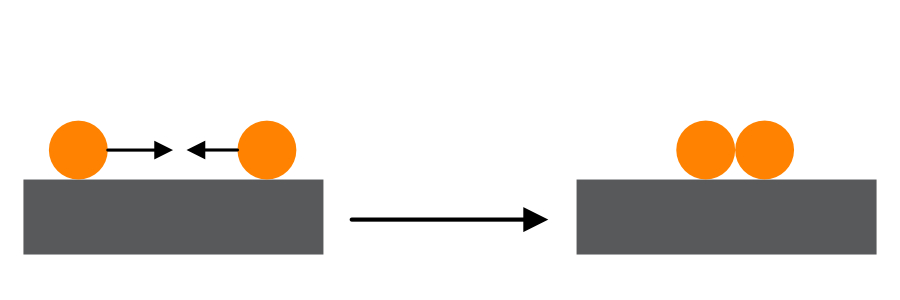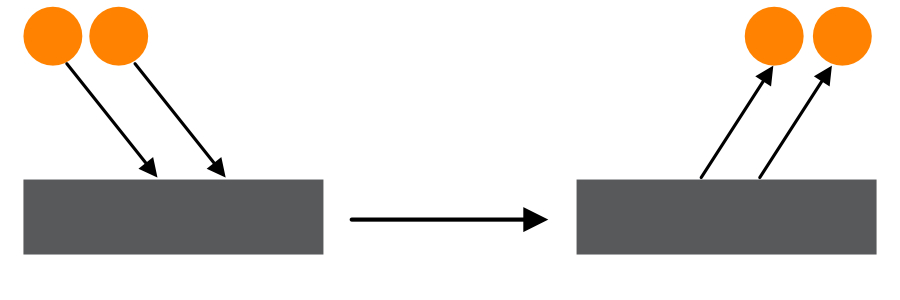Research
Surface chemistry forms the foundation of a wide range of technologies, such as heterogeneous catalysis, gas storage, chemical sensing, nanoscale electronics, and solar cells. It also governs natural phenomena, such as corrosion, the rusting of iron, and the weathering of rocks. The fundamental interactions governing the above mentioned processes occur between molecules and the surface of a solid. My research group develops atomistic models of the elementary steps of surface chemistry. We study the adsorption (binding), scattering, diffusion, desorption (unbinding), and reactions of gaseous atoms and molecules on solid surfaces using a combination of density functional theory (DFT), molecular dynamics simulations, and Monte Carlo simulations. Further, we explore mechanisms of energy transfer, electron transfer, and electron transport at the gas-solid interface, and model ways in which such exchange can be harnessed into useful applications. A few of our current projects are summarized below.
Adsorption on Surfaces

We have developed lattice-gas models of adsorption that include both surface and subsurface sites of the crystalline solid. Using these models, we study how adsorption properties change with coverage. Implementing these models with Monte Carlo simulations, we study the competition between surface and subsurface adsorption at different gas pressures and surface temperatures.
Reactions on Surfaces

We have studied the adsorption of aliphatic alcohols on the strontium titanate surface. During adsorption, the alcohol transfers its hydroxyl proton to the surface. We are now studying the catalytic transformation of the alcohol into a ketone or alkene to understand the mechanisms that govern product selectivity.
Scattering on Surfaces

We are studying the scattering of atoms and small molecules from surfaces to understand the different modes of gas-surface energy transfer during the collisions. We will explore the dynamics within the Born-Oppenheimer or “adiabatic” approximation as well as beyond the approximation in the nonadiabatic regime.
Molecular Junctions

We have developed theoretical models to understand the effects of the molecule-electrode interface on conductance of molecular junctions. Our models combine density functional theory and ab initio molecular dynamics simulations to study the atomic motion and quantum transport of single-molecule junctions.
Collaborations on Organometallic Catalysis
Olefin polymerizations using nickel(II) α-diimine complexes
In a collaboration with the Long group at the University of Tennessee, we modeled the mechanism of olefin homopolymerizations and copolymerizations using nickel(II) α-diimine catalysts. We investigated the effects of catalyst reduction and functional-group substitutions on the branching content of the polyolefin product.
C2+N1 aziridination from tetracarbene iron(II) and chromium(II) complexes
In a collaboration with the Jenkins group at the University of Tennessee, we studied the mechanisms of aziridination reactions catalyzed by tetracarbene iron(II) and tetracabene chromium (II) complexes. We computed reaction pathways between azide and alkene molecules to form aziridine molecules as promotd by the catalysts.